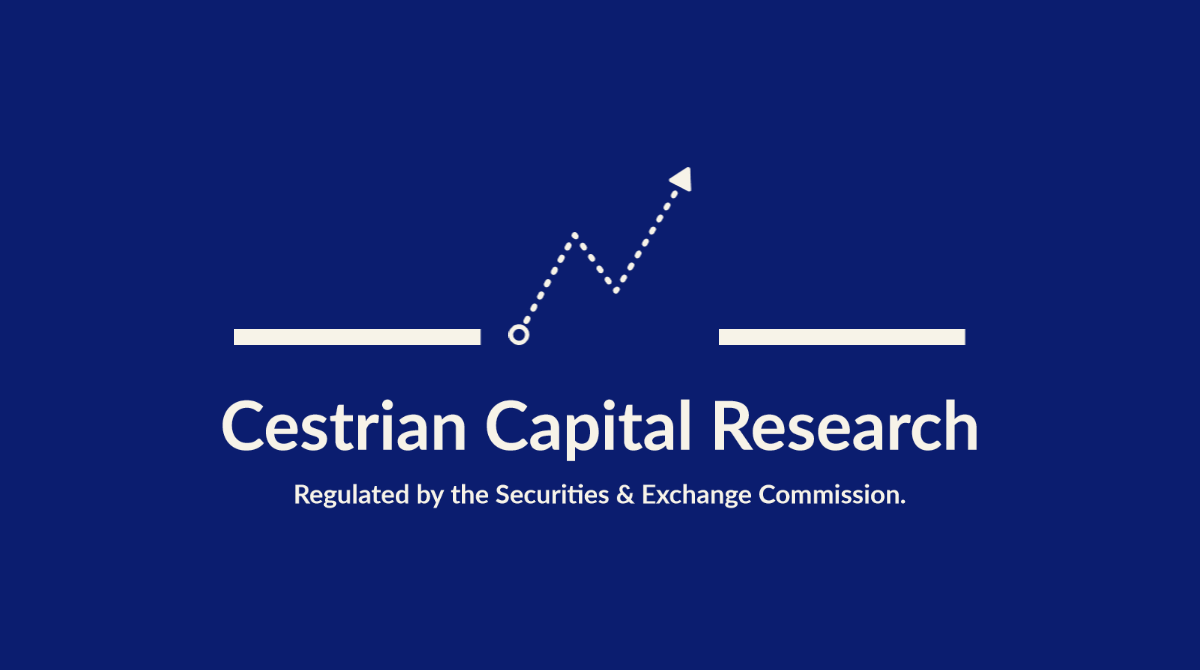Initiating Coverage Of Skyworks At Accumulate

Remember, Analog Is Different
DISCLAIMER: This note is intended for US recipients only and, in particular, is not directed at, nor intended to be relied upon by any UK recipients. Any information or analysis in this note is not an offer to sell or the solicitation of an offer to buy any securities. Nothing in this note is intended to be investment advice and nor should it be relied upon to make investment decisions. Cestrian Capital Research, Inc., its employees, agents or affiliates, including the author of this note, or related persons, may have a position in any stocks, security, or financial instrument referenced in this note. Any opinions, analyses, or probabilities expressed in this note are those of the author as of the note's date of publication and are subject to change without notice. Companies referenced in this note or their employees or affiliates may be customers of Cestrian Capital Research, Inc. Cestrian Capital Research, Inc. values both its independence and transparency and does not believe that this presents a material potential conflict of interest or impacts the content of its research or publications.
Introduction, by Alex King
The note below is from Jams O’Donnell who brings with her a bucketload of science and math. To her great credit I think she has spotted a really interesting buying opportunity in a stock that we have not covered to date, Skyworks, Inc ($SWKS). I want to highlight a few points before you go on to read her note.
- The bulk of the company’s revenue comes from $AAPL, as Jams notes below. Customer concentration is a huge risk for any company, and having over two-thirds of the revenue from a single customer is an extreme outlier. Many funds won’t buy such a stock, and this I believe is why the fundamental valuation multiples (eg. 9x TTM unlevered pretax FCF) is so low. If you own SWKS or are thinking of doing so, you need to be aware of its dependence on AAPL and AAPL’s proclivity to try to go it alone where silicon is concerned. Jams says as much in the note.
- BUT this isn’t your regular silicon. This is analog componentry and analog - that means, in essence, any silicon device that has to deal with real-world interfaces, not just binary data - is hard, very hard. There is a reason why, for the most part, companies in the semiconductor industry are generally divided between digital and analog/mixed signal (that means both digital and analog on one die), and this is because designing in the analog domain requires a whole different set of rules to digital. Managing power and in particular electromagnetic emissions, crosstalk etc is very different in analog and, last time I looked, there was still plenty of the magical element in analog design (as in, you just have to do this this way, why, don’t know, you just do, it worked in my last 40 chip designs and when I try to do it the way the book says, it doesn’t work). And what analog means is that is is a little less likely that AAPL squeezes its supplier with homebrew designs.
- The stock chart is in some ways good evidence that AAPL itself may be under accumulation (we have AAPL rated at Accumulate right now); any market big worth their Maybach knows that SWKS = AAPL, so, the fact that SWKS stock is trending sideways at the lows, after putting in a key Fibonacci retracement, says that AAPL may too be in that position.
Onto Jams’ note.
